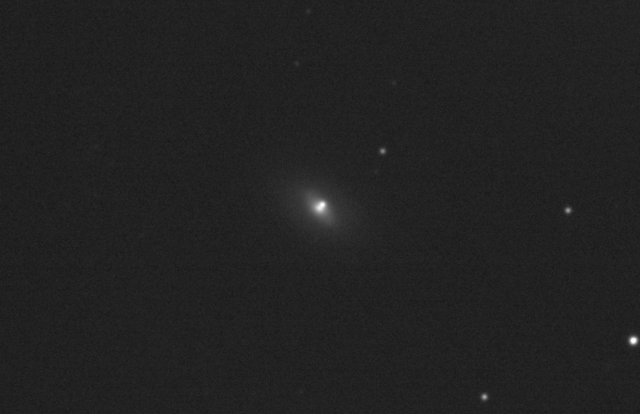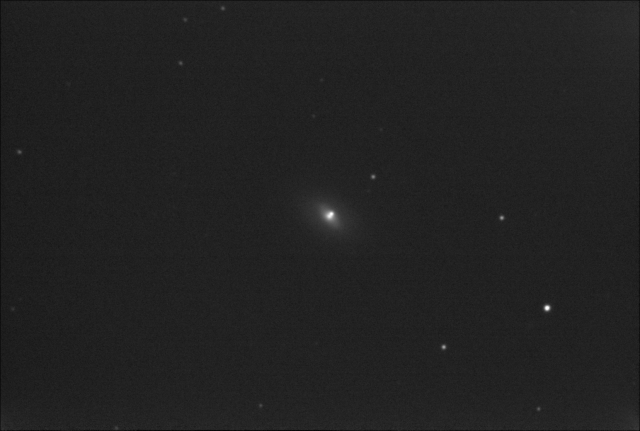Forum Replies Created
-
AuthorPosts
-
 David SwanParticipant
David SwanParticipantGood job all – submitters and editorial team. An enjoyable read on Sun. David
 David SwanParticipant
David SwanParticipantVery good paper ;). The authors state that the very high apparent magnitude of the host star (-27) precluded further studies of the host star and planet with their telescope. I aim to follow up the authors’ work with my own observations of this mystery planet as it comes to opposition, even though its southerly declination will be a problem.
 David SwanParticipant
David SwanParticipantAn amazing image. Consider posting it in the Observing Community area.
 David SwanParticipant
David SwanParticipantThis is hilarious. Thanks for pointing it out!
 David SwanParticipant
David SwanParticipantI am no expert, but according to the Spectral Atlas for Amateur Astronomers (Walker), you see Fe I/II emission lines in Be stars of classifications e3, e3+ and e4 – maybe weak in e2 class (psi Persei).
 David SwanParticipant
David SwanParticipantTony Rodda has posted his spec of the star. He sees the Fe emission too. Click spec database on the right, type psi per into the box and click fetch spectra. David
 David SwanParticipant
David SwanParticipantSo the weather there is no different to here then! I have my fingers crossed for a bright supernova (mag 11-13), well separated from the host galaxy nucleus, and present in a relatively sparse star field. I would like to try to get a spectrum using my slitless StarAnalyser. Is this too much to ask? 🙂
 David SwanParticipant
David SwanParticipant In-line image cropped
In-line image cropped David SwanParticipant
David SwanParticipantI managed to stack 20 x 10s frames. Midpoint of capture 21:09:25 UT. It’s bright! See also the attached png.

 David SwanParticipant
David SwanParticipantHe was clearly a talented and well-liked man. I have just read his obit in the Times – Nick is quoted directly from his forum post.
 David SwanParticipant
David SwanParticipantGreat talks; sorry I couldn’t make it in person due to commitments. David
 David SwanParticipant
David SwanParticipantYes, I think Hugh ‘saves’ the Bahtinov mask diffraction pattern after achieving a sharp spectrum on an A type star, and then targets that pattern on the next target star. Sorry, because I am new to it I am not including the pertinent info! David
 David SwanParticipant
David SwanParticipantThanks Robin. I think next on the shopping list is one of these Bahtinov masks – focusing is clearly one of the most tricky parts for a novice like me.
 David SwanParticipant
David SwanParticipantYes, with the frames I look last night: for some, a two point calibration with zero and hydrogen beta seemed to work very nicely, with the alpha, beta, gamma and delta Balmer lines superimposing precisely on target in RSpec. In other frames this wasn’t the case. I guess it is just an effect of seeing? I am looking forward to seeing the spectra of SN2018gj that will appear over the next few days. I note you are discussing the uncertainty around the SNII subtype on the ARAS forum. David
 David SwanParticipant
David SwanParticipantI’ll not do any sharpening. It was easy enough anyway to scan through the frames by eye and then select the best; no computer programme is required for that. The seeing yesterday was extremely bad – as unstable as I’ve ever seen it would not be an exaggeration.
 David SwanParticipant
David SwanParticipantI’ve posted a much better effort on my member’s page. With my first go, I thought stacking and sharpening a load of images (a la planetary imaging) would help things, but I think it actually blurred the spectrum – and the bit depth was 8 bit anyhow. This time I was careful with focusing and made sure the exposure wasn’t too high. I think the result is much better. Unfortunately the ADU of my camera is 14 rather than 16 bit, so there’s not quite as much data as there could be.
 David SwanParticipant
David SwanParticipantYes, I think overexposure is likely. I’ll look into the brightness values. Vega of course is low in the evening, and with this being early days (in spec) for me, I thought I’d go for a convenient target from my backyard. Thanks Hugh – David
 David SwanParticipant
David SwanParticipantI’ve carried out my first capture. Not an ideal target I gather, but the weather isn’t cooperating! I’ve done the wavelength calibration – with the star image and hydrogen alpha line. Focus is definitely something I’ll work on; and exposure time too. David
 David SwanParticipant
David SwanParticipantI’ll keep you informed on how I get on. There was a 10min gap in the clouds yesterday… David
 David SwanParticipant
David SwanParticipantThanks Robin – David
-
AuthorPosts
